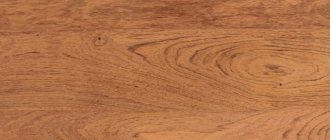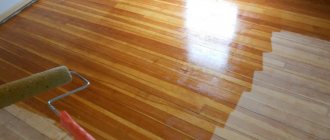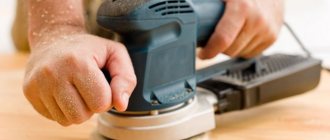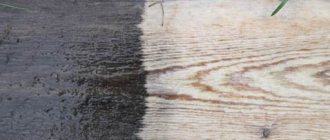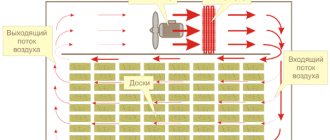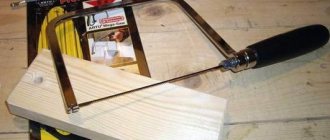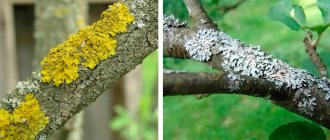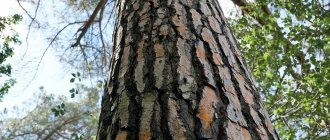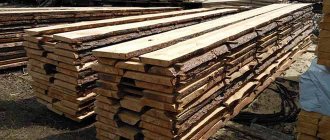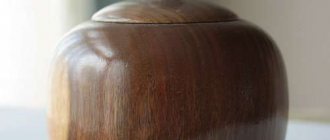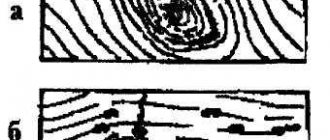In this article I will talk about wood and its types.
As we all know, it is impossible to make a craft without wood. Nowadays, there are a lot of types of wood that are different in quality, hardness, softness, color, properties, etc.
Wood can react to climatic conditions. For example, if you store plywood in a warm, unventilated area, the plywood will deteriorate over time.
Wood consists of elongated thin cells, like straws, that conduct water and dissolved minerals from the roots to the leaves, where the light produces organic substances necessary for tree growth. The wood of each species has cells that are characteristically located only in that species.
Wood can be soft or hard.
Types of wood:
Pine
(soft breed)
There are many varieties of pine, widely used in construction and for the manufacture of certain types of furniture.
Red tree
(hard rock)
The species, native to Honduras and Africa, is widely used in furniture production, usually in the form of veneers.
Elm
(hard rock)
A good general purpose material used in shipbuilding, as a structural material and for turning.
Cedar
(soft breed)
Lightweight and durable, cedar wood turns gray over time. Used for making stairs and window frames.
Douglas fir, or otherwise Liarsuga
(soft breed)
Very tall trees, the wood of which is used as a structural material in furniture and plywood production.
Beech
(hard rock)
The wonderful fine-grained beech wood is suitable for furniture, woodturning and toy making, but not for outdoor products.
Oak
(hard rock)
Very strong and durable oak wood is necessary for construction work and in the manufacture of furniture.
Chinara
(hard rock)
Light wood. Used in the manufacture of furniture and small parts, such as turning products.
Teak
(hard rock)
Heavy and durable teak wood is used in carpentry, furniture production and shipbuilding.
Birch
(hard rock)
Moderately hard birch wood is widely used in carpentry and furniture production.
Bog oak
(hard rock)
Stained European oak, which has a brown color, is highly valued as a facing material for furniture.
Ebony
(hard rock)
It has extremely hard and expensive wood. Used in the manufacture of keys for musical instruments, chess pieces, etc.
Larch
(soft breed)
Moderately soft larch wood is used both in furniture production and for the manufacture of piles, posts, sleepers, and floors.
Black walnut
(hard rock)
An excellent material for making furniture and turning products.
Ash
(hard rock)
Very hard and durable ash wood is used to make tool handles and sports equipment. Excellent material for turning work.
Afromosia
(hard rock)
Grows in West Africa. Used in the manufacture of furniture. Sometimes it stains under mahogany.
Silver maple
(hard rock)
Part of the maple wood with marks from underdeveloped branches is used in the form of veneer.
American linden
(hard rock)
Lightweight hardwood. Used to make cases, toys, and some types of furniture.
Entandrophragm
(hard rock)
Grows in Africa. It is used to make decorative furniture, usually in the form of veneer.
Ordinary wood made stronger than steel or titanium
Wood is a great material for... everything. They make everything from it that you can imagine. The only thing missing is durability. Many types of wood are very strong, but unfortunately are not strong enough to be used more widely. Specialists from the USA have achieved an increase in the strength characteristics of wood through special processing.
After wood is processed using the new method, its strength increases tenfold, it becomes stronger than steel or titanium. At the same time, wood still remains an environmentally friendly material, an alternative to plastics or metals. “In fact, this is a new class of materials with great potential,” said Li Teng, a scientist at the University of Maryland. The work of Teng and his colleagues was published on February 7 in the authoritative scientific publication Nature.
Attempts to strengthen the tree and change its characteristics in one way or another have not stopped for decades. Some methods are successful, others not so much. Among the successful ones is the isolation of cellulose microfibers, which makes it possible to create materials that are sufficiently resistant to external influences.
But Teng and his colleagues decided to approach the problem from a different angle. The researchers focused on modifying the porous structure of natural wood. They initially tried boiling various types of wood, including oak, in a solution of sodium hydroxide and sodium sulfite for seven hours. This process left the cellulose structure largely intact, but the components surrounding the cellulose were partially gone. One such component is lignin, a polymer that binds cellulose.
The team then placed the wooden block under a press for 24 hours while heating it to 100 degrees Celsius. As a result, wooden planks were formed that were one-fifth the thickness of the previous parameters. In addition, this material turned out to be three times denser than natural wood and 11.5 times stronger. Previous attempts to enhance the strength characteristics led to an increase in this parameter by a maximum of 3-4 times.
Scanning the fibers of the new material with an electron microscope showed that squeezing destroys the cellulose tubes, which are compressed and intertwined together. “You get nanofibers placed along the growth axis of the tree, interlocking with each other,” said one of the study participants.
To test how resilient the “new type of wood” was, the team shot the pallets with a ballistic gun typically used to test the durability of military vehicles. As it turned out, the modified wood can withstand the impact of a 46-gram steel projectile flying at a speed of approximately 30 meters per second.
This, of course, is much slower than the speed of a bullet leaving the barrel of a firearm, but it is still a solid achievement. This speed approximately corresponds to the speed of a car moving before colliding with an obstacle. Yes, the Americans believe that their method makes it possible to create a material suitable for the automotive industry.
Experts say the "tree enhancer" team is overcomplicating a process that could be much simpler. For example, simply exposure to high temperature, steam and pressure can significantly improve the strength characteristics of a material. Or you can simply boil the wood for 7 hours in a caustic soda solution. The result is a fairly durable material. The 24-layer protection made from this type of wood stops a 9mm bullet fired from a pistol.
Michaela Ider, a researcher at the Max Planck Institute, believes that pressure also strengthens the wood - although in this case it is unclear how much intertwining of nanofibers occurs. However, the authors of the original work are confident that only their technique can significantly improve the strength of wood. Colleagues agree, saying the work has great potential and could lead to a commercial technology in the future to produce durable building materials from wood.
How to care for a wooden house?
For all the benefits that this material can give, you will have to pay for it with proper processing and care of the wood - otherwise you will have to regret not choosing a foam or gas block home.
Are you looking for high-quality building materials at reasonable prices for a country house? Receive a discount code from the manufacturer and use it during the home checkout process. Get a discount on building materials »
So, what does it take to ensure that your wood lasts as long as possible?
- Treatment against parasites and microorganisms. Antiseptics prevent the formation of mold and prevent rotting.
- Waterproofing. It is especially relevant for bathrooms and adjacent rooms. Leakage of water leads to the fact that it is absorbed by the wood, which, in turn, will lead to the destruction of the material. The most popular materials for waterproofing are bitumen (including those with the addition of rubber and caoutchouc), acrylic. It is worth choosing waterproofing, including based on your region. Bituminous waterproofing materials are not frost-resistant, unlike bitumen-rubber ones.
- Use of fire retardants. These are substances that prevent the ignition of the material, as well as the spread of fire. They are usually based on flame retardants, such as ammonium phosphate, ammonium chloride and others. Fire retardants are often contained in paint, varnish, or complex substances for treating the walls of a house.
- Insulation. Although wood retains heat well, in some cases it is impossible to do without additional insulation. As a rule, they resort to insulation from the outside - this helps to save living space and avoid exposure of residents to chemicals. For insulation, mineral wool and fiberglass are often used, which are fixed to external walls in the form of slabs. Polystyrene foam or expanded polystyrene is almost never used - it prevents air penetration and can create a greenhouse effect inside.
As for chemical treatment, you can now easily find complex compositions that combine a varnishing effect, waterproofing properties, and also contain flame retardants, biopyrenes and other protective substances.
Do not forget that the house is constantly affected by many factors - from its own weight to ultraviolet radiation, so all types of treatment should be periodically updated - tinted, applied additional layers, etc. It is better to do a total home treatment every 3-5 years.
Types of cookware
The wooden utensils used by our ancestors were extremely diverse. There were several ways of making objects, which is why the types of ancient Russian dishes are different:
- chopped;
- dugout;
- chiseled;
- Cooper's
Turned ware
Chiseled utensils
They used hoops to assemble tubs and barrels, cut spoons, and turned dishes, ladles and bowls. In the workshops, artisans made stavtsy (dining vessels of various sizes with lids), carved bratins, bowls, goblets, and cups.
Pros and cons of wooden houses
In Russia, according to Rosstat, approximately 10-15% of houses are made of wood. This figure cannot be called very high compared to other countries, but this indicates some undoubted advantages of this material.
To select the right home builder for your desired low-rise housing construction technology, use the Building Companion directory search. Examples of work and reviews are visible in the contractors' profiles; you can request an estimate of the cost of their work. Find a company to build a box house » First of all, this:
- Appearance. The aesthetics and variety of wooden houses allow you to implement almost any architectural solution - from a cheap log house to a luxurious Swiss-style chalet.
- Environmental friendliness. Natural materials bring a person closer to nature, smell wonderful and delight the eye with the naturalness of their colors. Wood also helps maintain normal humidity levels in rooms.
- Heat and sound insulation. Wooden buildings, in addition to the fact that they breathe, also perfectly retain heat inside themselves and also do not allow sound to pass through. But, of course, in cool regions they will still have to be insulated.
- Ease. Logs or parts of a frame house are much easier to transport to the construction site than, for example, bricks.
- Durability. The service life of a building depends on many conditions - the type of foundation, the specific type of material, operating conditions, but with proper care, good wooden houses can easily stand for 100 years, or even more.
- Possibility of not having to deal with additional interior finishing. The wood itself has a pleasant texture and color, so it is not at all necessary to paint it or cover it with wallpaper.
- Compliance of the material. Wood is easy to process; it is easier to hammer a nail or screw a screw into it than other materials. This makes interior finishing significantly easier.
- It is easier to make a wooden house with your own hands. This is especially true for frame structures, which can be erected without the help of a construction team in just a few months.
Almost all the disadvantages of wood are associated with the same feature - it is a completely natural material that can be subject to:
- Rotting. The accumulation of moisture leads to softening of the material, the appearance of an unpleasant odor, and the proliferation of bacteria.
- Fires. A gas leak or careless handling of fire can lead to a fire, but untreated wood burns well and spreads fire.
- Natural changes in the structure of wood as a result of exposure to temperature and time. Shrinkage, swelling, shrinkage - all this may vary depending on the specific type of wood, but must be taken into account.
- Exposure to small parasites. Bark beetles, woodworms, termites - this is just a small list of insects that are not averse to feasting on wood. Small holes in the walls are sure signs that the wood structure needs urgent treatment.
Another disadvantage is some limitations in architectural solutions associated with the initially “given” shape of lumber. For radius, semicircular structural elements of a building, or some other complex architectural solutions, you will have to choose a different material. In wooden buildings, angles and straight lines always predominate.
At the same time, many of the disadvantages of wood can be neutralized by proper care of the material.
Traditions of making and using wooden utensils
Not many ancient dishes have survived to this day, which is explained by the fragility of the material. But it is known for certain that already in the 8th century in Rus' craftsmen made various utensils by hand, and from the 12th century they began to use the simplest machines for this.
Birch bark bodies (pesteri), tues, egg capsules, and boxes were common everywhere.
